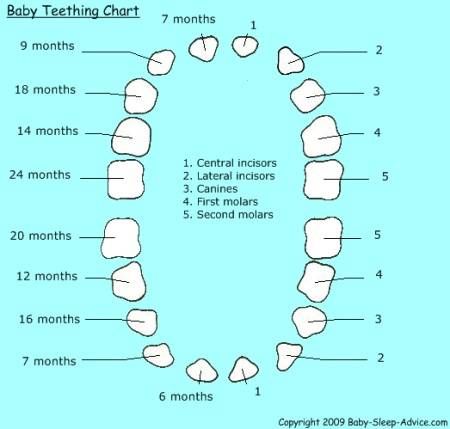At what age do babies stop teething. When Do Babies Stop Teething? A Comprehensive Guide to Tooth Eruption
When does teething begin and end in babies. How many teeth do babies typically get. What are the common symptoms of teething. How can parents soothe a teething baby.
The Teething Timeline: From First Tooth to Full Set
Teething is a crucial milestone in a baby’s development, marking the emergence of their primary teeth. This process, formally known as tooth eruption, typically begins around 6 to 10 months of age and continues until the child is about 25 to 33 months old. However, it’s important to note that teething patterns can vary significantly among children.
When do babies start getting their teeth? Most infants will cut their first tooth between 6 and 10 months of age. The lower central incisors, or the two front bottom teeth, are usually the first to appear. From there, teeth tend to emerge in pairs, following a predictable pattern.
The Typical Order of Tooth Eruption
- Lower central incisors
- Upper central incisors
- Upper lateral incisors
- Lower lateral incisors
- Upper first molars
- Lower first molars
- Upper canines
- Lower canines
- Lower second molars
- Upper second molars
How long does the entire teething process last? On average, babies will continue to gain two new teeth every 2 to 4 months until they reach the age of 2. By the time a child turns 3, they should have a full set of 20 primary teeth.
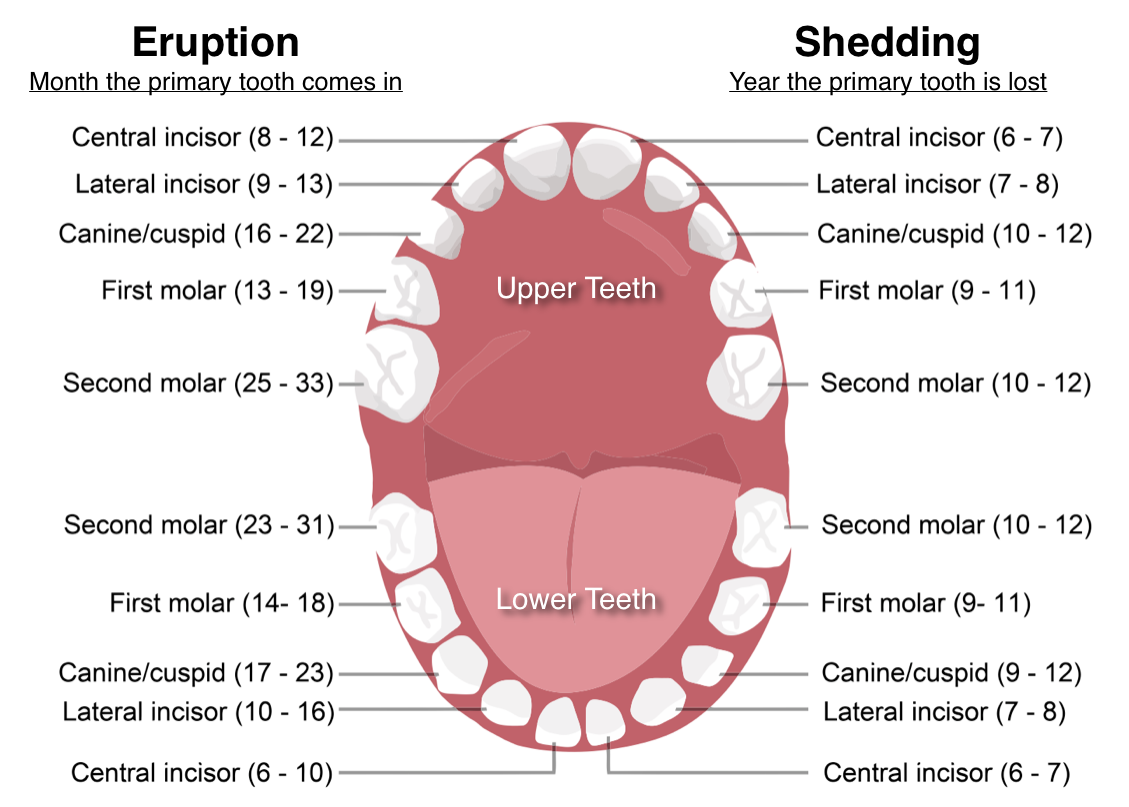
Early and Delayed Teething: When to Be Concerned
While the teething timeline provided serves as a general guide, it’s crucial to understand that every child develops at their own pace. Some babies may start teething as early as 4 months, while others might not cut their first tooth until 15 months of age.
Is early or delayed teething a cause for concern? In most cases, variations in teething timelines are not a problem. Sometimes, late eruption can be hereditary. However, the American Academy of Pediatrics (AAP) recommends that children have their first dental visit around the time their first tooth appears or by their first birthday, whichever comes first. This provides an opportunity to discuss any concerns with a dental professional.
Recognizing Teething Symptoms: What to Look For
As parents eagerly await their baby’s first tooth, it’s helpful to be aware of the common signs and symptoms of teething. While some babies may experience little to no discomfort, others might show more pronounced signs.
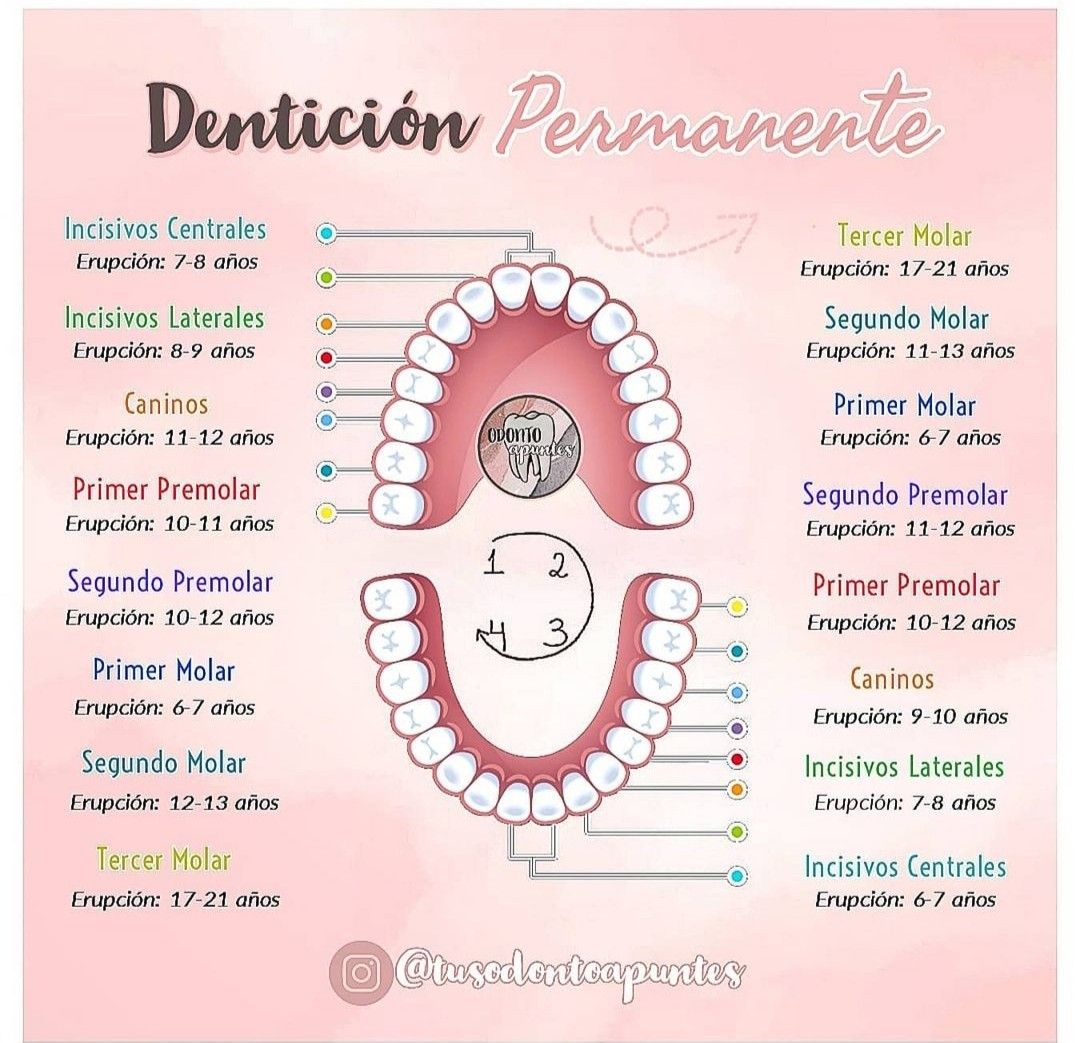
Common Teething Symptoms
- Increased drooling
- Excessive sucking or chewing on objects
- Irritability
- Gnawing on fingers or hands
Are there any misconceptions about teething symptoms? While increased drooling and sucking on objects are common in babies around 4 to 6 months of age, these behaviors are not necessarily indicative of imminent tooth eruption. Additionally, contrary to popular belief, diarrhea is no longer considered a reliable sign of teething by many experts.
Soothing a Teething Baby: Effective Remedies and Strategies
Watching your baby experience discomfort during teething can be distressing for parents. Fortunately, there are several safe and effective remedies to help ease your little one’s pain and restore calm to your household.
Safe Teething Remedies
- Provide teething toys or objects for chewing
- Use cold washcloths as homemade teethers
- Offer rubber teething rings (refrigerated, not frozen)
- Use bibs to manage excessive drooling
- Apply soothing skin ointments to prevent rashes
Why are teething toys effective? Biting down on firm objects can help relieve the pressure of teeth pushing through the gums. When choosing teething toys, ensure they are large enough to prevent choking hazards and avoid rings filled with liquid or gels that could potentially break.
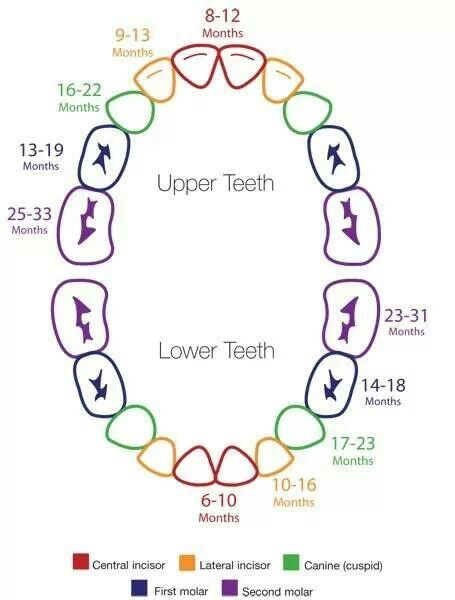
The Role of Over-the-Counter Remedies in Teething Relief
When natural remedies and teething toys prove insufficient, some parents may consider over-the-counter options for teething relief. However, it’s crucial to approach these solutions with caution and under the guidance of a healthcare professional.
Which over-the-counter remedies are safe for teething babies? Acetaminophen or ibuprofen (for babies over 6 months) can be used to alleviate pain associated with teething. However, it’s essential to consult with your pediatrician before administering any medication to ensure proper dosage and suitability for your child.
Are there any teething remedies to avoid? The Food and Drug Administration (FDA) advises against using topical numbing gels or liquids containing benzocaine for children under 2 years old due to potential health risks. Similarly, homeopathic teething tablets have been associated with safety concerns and are not recommended.
Beyond Baby Teeth: The Journey to Permanent Molars
While the primary teething phase typically concludes around 3 years of age, it’s important to remember that the dental journey doesn’t end there. Children will eventually lose their baby teeth and develop a full set of permanent teeth.

When do children get their permanent molars? The first set of permanent molars usually emerges around 6 to 7 years of age. The second set of molars typically appears when a child is about 12 or 13 years old. These milestones mark significant stages in a child’s dental development.
Preparing for Permanent Teeth
- Maintain good oral hygiene habits
- Schedule regular dental check-ups
- Monitor the loss of baby teeth
- Be aware of potential orthodontic needs
How can parents support their child’s dental health during the transition to permanent teeth? Encouraging consistent brushing and flossing, providing a balanced diet, and maintaining regular dental visits are crucial for supporting your child’s oral health as they transition from baby teeth to permanent teeth.
The Importance of Dental Care During and After Teething
Establishing good oral hygiene habits early in life is essential for maintaining healthy teeth and gums throughout childhood and beyond. As soon as your baby’s first tooth appears, it’s time to start thinking about dental care.

Dental Care Tips for Teething Babies and Toddlers
- Clean gums with a soft, damp cloth before teeth emerge
- Use a small, soft-bristled toothbrush once teeth appear
- Introduce fluoride toothpaste in appropriate amounts
- Avoid putting babies to bed with bottles containing milk or juice
- Schedule regular dental check-ups
When should children start using fluoride toothpaste? The American Dental Association recommends using a smear of fluoride toothpaste (about the size of a grain of rice) for children under 3 years old, and a pea-sized amount for children 3 to 6 years old.
How often should children visit the dentist? After the initial visit around the first birthday, children should generally see a dentist every six months for routine check-ups and cleanings. However, your dentist may recommend more frequent visits based on your child’s individual needs.
Addressing Common Concerns and Myths About Teething
As with many aspects of child development, teething is surrounded by various myths and misconceptions. It’s important for parents to be able to distinguish fact from fiction to provide the best care for their teething babies.

Common Teething Myths Debunked
- Myth: Teething causes fever and diarrhea
- Fact: While teething can cause mild temperature elevation, high fever and diarrhea are not typical symptoms and may indicate other health issues
- Myth: Teething necklaces are safe and effective
- Fact: Teething necklaces pose choking and strangulation hazards and are not recommended by pediatric experts
- Myth: Late teething indicates developmental delays
- Fact: The timing of teething varies widely among children and is not necessarily indicative of overall development
How can parents distinguish between teething discomfort and illness? While teething can cause irritability and mild discomfort, symptoms such as high fever, severe diarrhea, or prolonged distress are not typical of teething and may warrant medical attention. When in doubt, it’s always best to consult with your pediatrician.
The teething journey is a significant phase in a child’s early development, marked by both excitement and challenges for parents and babies alike. By understanding the typical timeline, recognizing common symptoms, and employing safe soothing strategies, parents can help their little ones navigate this important milestone with greater ease. Remember that each child’s teething experience is unique, and what works for one baby may not work for another. Patience, observation, and consistent dental care are key to supporting your child’s oral health from their first tooth to their full set of permanent teeth.

How Long Does Teething Last?
Waiting for your little one to cut their first few teeth is one of those milestones that you may look forward to but also dread just a bit. Teething can be painful for babies — and their parents, too! So, when can you expect your baby to begin teething, and how long will this stage last?
Usually teething begins around 6 to 10 months of age and lasts until baby is about 25 to 33 months. Still, teething isn’t officially over until young kids get their permanent molars. The first set of molars comes in around 6 to 7 years of age, and you can expect to see the second set come in when your child is around 12 or 13.
While we generally refer to the phase as “teething” or “cutting teeth,” its formal name is tooth eruption. Although every baby develops on their own timeline, most babies get their first teeth around 6 to 10 months of age.
You’ll be glad to know that not all of your baby’s teeth erupt at once. Normally, it’s the lower central incisors (the two front lower teeth) that come in first. Your baby’s teeth will usually appear in pairs and in this order:
Your baby’s teeth will usually appear in pairs and in this order:
- lower central incisors
- upper central incisors
- upper lateral incisors
- lower lateral incisors
- upper first molars
- lower first molars
- upper canines
- lower canines
- lower second molars
- upper second molars
Assuming there are no underlying issues, your baby should continue to gain two new teeth every 2 to 4 months until the age of 2.
The final baby teeth to appear will be your toddler’s second lower and upper molars. The lower second molars will arrive between 23 to 31 months, while the upper second molars appear between 25 to 33 months.
By the time your child is 3 years old, they should have 20 teeth, which is a full set of primary or baby teeth. But rest easy, as more teeth begin to appear in your baby’s mouth, the horrors of teething tend to subside.
Early and delayed teething
The age range for teething is a general guide — not a hard and fast rule.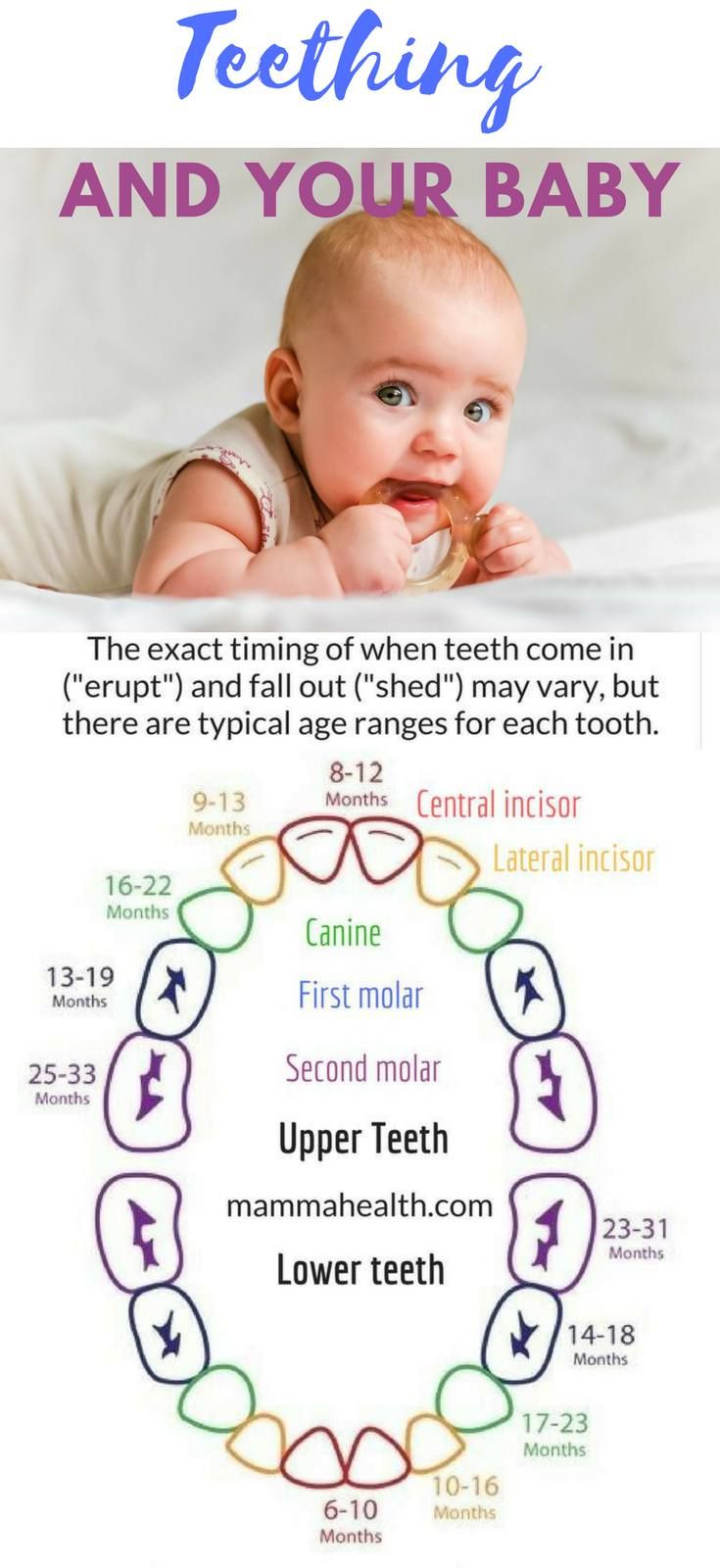 Some babies can cut their teeth as early as 4 months old.
Some babies can cut their teeth as early as 4 months old.
It’s also not necessarily a problem if your child’s first tooth doesn’t appear until they’re much older than the guidelines say to expect. Sometimes, a late eruption is hereditary. Some babies don’t cut their first tooth until they’re 15 months old.
Given that the American Academy of Pediatrics (AAP) recommends that children have their first dental visit around when their first tooth erupts or by 1 year of age — whichever comes first — you should have the opportunity to discuss any concerns you may have with a dentist by baby’s first birthday.
So, now you know the timeline for teething, but what about the symptoms?
While increased drooling and sucking on things are nearly universal by 4 to 6 months of age and not necessarily signs that a tooth is about to erupt, other notable symptoms may include irritability and a baby that’s gnawing on anything they can get their hands on, including your fingers!
While you may hear people say diarrhea is a sign of teething, many experts no longer support this belief.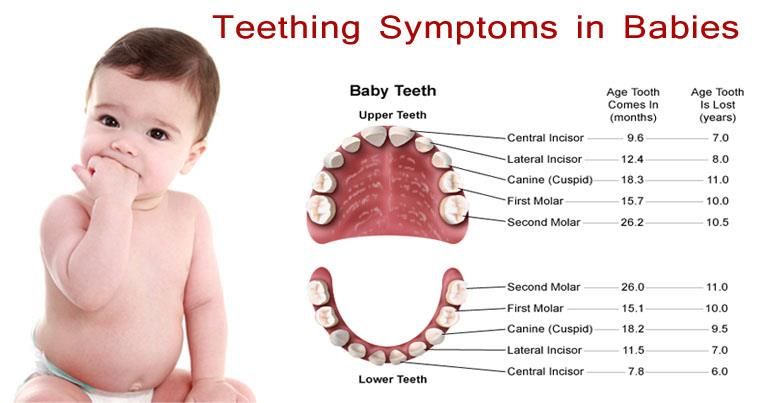 So, if you’re concerned that something else could be at play besides your baby cutting their teeth, contact your pediatrician.
So, if you’re concerned that something else could be at play besides your baby cutting their teeth, contact your pediatrician.
Usually, it’s the first few pairs of teeth that seem to be the most uncomfortable for babies. As more teeth appear, the classic horror tales of teething should subside. But there’s a catch. Sometimes when the final sets of molars come in, the classic painful teething symptoms can return.
Keep in mind that every baby is different, and your child might not experience any symptoms at all when their teeth erupt.
There’s nothing worse than seeing your baby in pain and feeling helpless to stop it. Fortunately, there are plenty of safe remedies that you can use to try to help ease your baby’s discomfort — and restore calm to your home!
One of the best things you can do is give your baby something to chew on. Biting down on hard or firm objects may help them relieve the pressure of their teeth pushing up into their gums.
Always make sure that whatever you give them is large and doesn’t contain small items or pieces that could pose a choking hazard. While you can buy teething toys, you can also create homemade teethers by wetting a washcloth and putting it in the freezer for 30 minutes. It’ll give your little one something to gnaw on, and the cold cloth may also soothe their sore gums.
While you can buy teething toys, you can also create homemade teethers by wetting a washcloth and putting it in the freezer for 30 minutes. It’ll give your little one something to gnaw on, and the cold cloth may also soothe their sore gums.
You can also opt for rubber teething rings, but avoid rings that are full of liquid or gels, as a baby chomping on them could eventually break it. Just remember that even though you can put washcloths in the freezer, teething rings should only be kept in the fridge.
You’ll also want to make sure to have plenty of bibs and soothing skin ointments on hand, as extra drool can lead to skin irritation and rashes.
Over-the-counter remedies
If you’ve tried all the at-home remedies and nothing seems to be working, it’s OK to bring in reinforcements by way of over-the-counter (OTC) remedies.
After talking with your pediatrician, you can use acetaminophen or ibuprofen on an occasional basis to help reduce the pain. This should only be used for babies older than 6 months, and you should ensure that you’re using an appropriate dosage.
Remedies to avoid
Once upon a time, topical teething gels were a go-to remedy among parents of teething babies. But these days, we know that the benzocaine they often contain can lead to harmful side effects.
Plus, since it’s a topical remedy, the gel washes off the gums fairly quickly, which can lead to parents using it too frequently. Likewise, remedies that are marketed as homeopathic may contain belladonna and should also be avoided for the same reasons.
And while they’re quite popular, most experts don’t advocate for teething bracelets, necklaces, or jewelry. Although they might help soothe your baby’s gums, the small pieces can become choking hazards, and necklaces can be a strangulation hazard. There’s also concern that teething jewelry can harbor bacteria or cause mouth injuries if you have a vigorous biter.
Experts recommend that you make an appointment with a pediatric dentist by a baby’s first birthday or once your child cuts their first teeth. While that first appointment won’t be nearly as intensive as when your child has a full set of teeth, it will help them get comfortable with going to the dentist and set them on the path for good oral health.
While that first appointment won’t be nearly as intensive as when your child has a full set of teeth, it will help them get comfortable with going to the dentist and set them on the path for good oral health.
Teething can be a frustrating time for both babies and parents. But just know that this moment in time is temporary. By the time your child is about 3 years old, they’ll have a full smile to charm you with.
How Long Does Teething Last?
Waiting for your little one to cut their first few teeth is one of those milestones that you may look forward to but also dread just a bit. Teething can be painful for babies — and their parents, too! So, when can you expect your baby to begin teething, and how long will this stage last?
Usually teething begins around 6 to 10 months of age and lasts until baby is about 25 to 33 months. Still, teething isn’t officially over until young kids get their permanent molars. The first set of molars comes in around 6 to 7 years of age, and you can expect to see the second set come in when your child is around 12 or 13.
While we generally refer to the phase as “teething” or “cutting teeth,” its formal name is tooth eruption. Although every baby develops on their own timeline, most babies get their first teeth around 6 to 10 months of age.
You’ll be glad to know that not all of your baby’s teeth erupt at once. Normally, it’s the lower central incisors (the two front lower teeth) that come in first. Your baby’s teeth will usually appear in pairs and in this order:
- lower central incisors
- upper central incisors
- upper lateral incisors
- lower lateral incisors
- upper first molars
- lower first molars
- upper canines
- lower canines
- lower second molars
- upper second molars
Assuming there are no underlying issues, your baby should continue to gain two new teeth every 2 to 4 months until the age of 2.
The final baby teeth to appear will be your toddler’s second lower and upper molars. The lower second molars will arrive between 23 to 31 months, while the upper second molars appear between 25 to 33 months.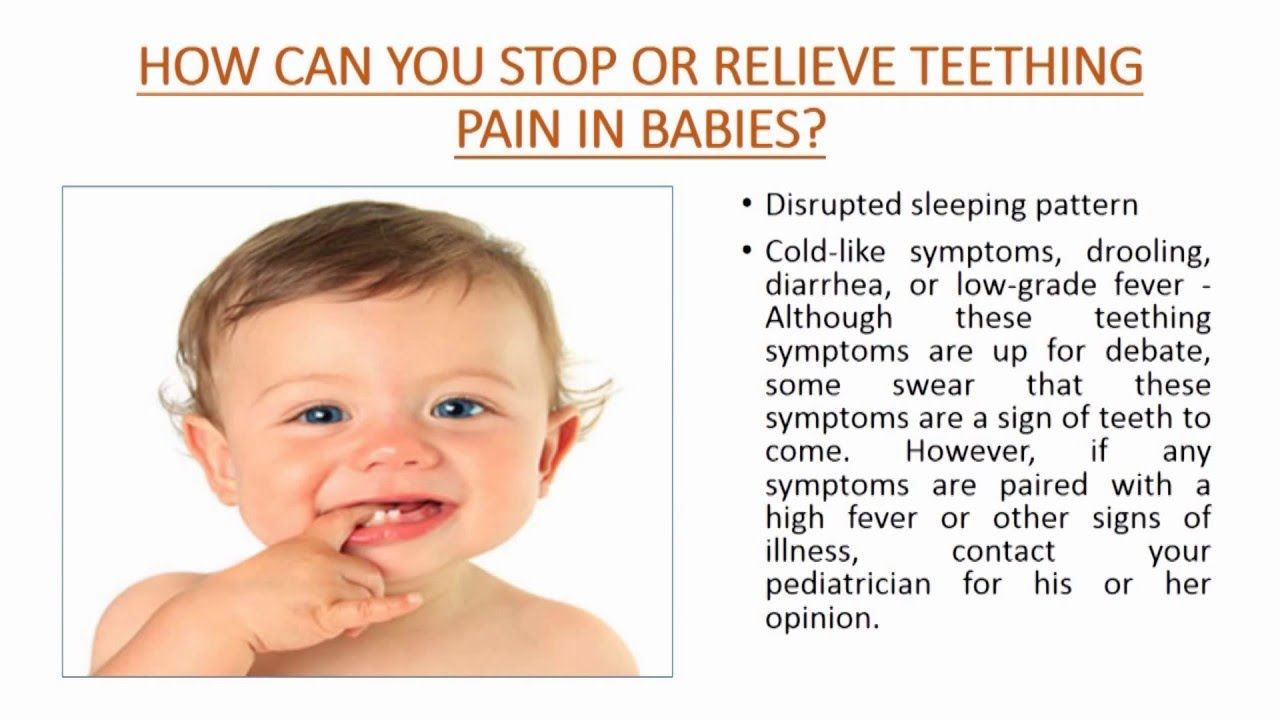
By the time your child is 3 years old, they should have 20 teeth, which is a full set of primary or baby teeth. But rest easy, as more teeth begin to appear in your baby’s mouth, the horrors of teething tend to subside.
Early and delayed teething
The age range for teething is a general guide — not a hard and fast rule. Some babies can cut their teeth as early as 4 months old.
It’s also not necessarily a problem if your child’s first tooth doesn’t appear until they’re much older than the guidelines say to expect. Sometimes, a late eruption is hereditary. Some babies don’t cut their first tooth until they’re 15 months old.
Given that the American Academy of Pediatrics (AAP) recommends that children have their first dental visit around when their first tooth erupts or by 1 year of age — whichever comes first — you should have the opportunity to discuss any concerns you may have with a dentist by baby’s first birthday.
So, now you know the timeline for teething, but what about the symptoms?
While increased drooling and sucking on things are nearly universal by 4 to 6 months of age and not necessarily signs that a tooth is about to erupt, other notable symptoms may include irritability and a baby that’s gnawing on anything they can get their hands on, including your fingers!
While you may hear people say diarrhea is a sign of teething, many experts no longer support this belief.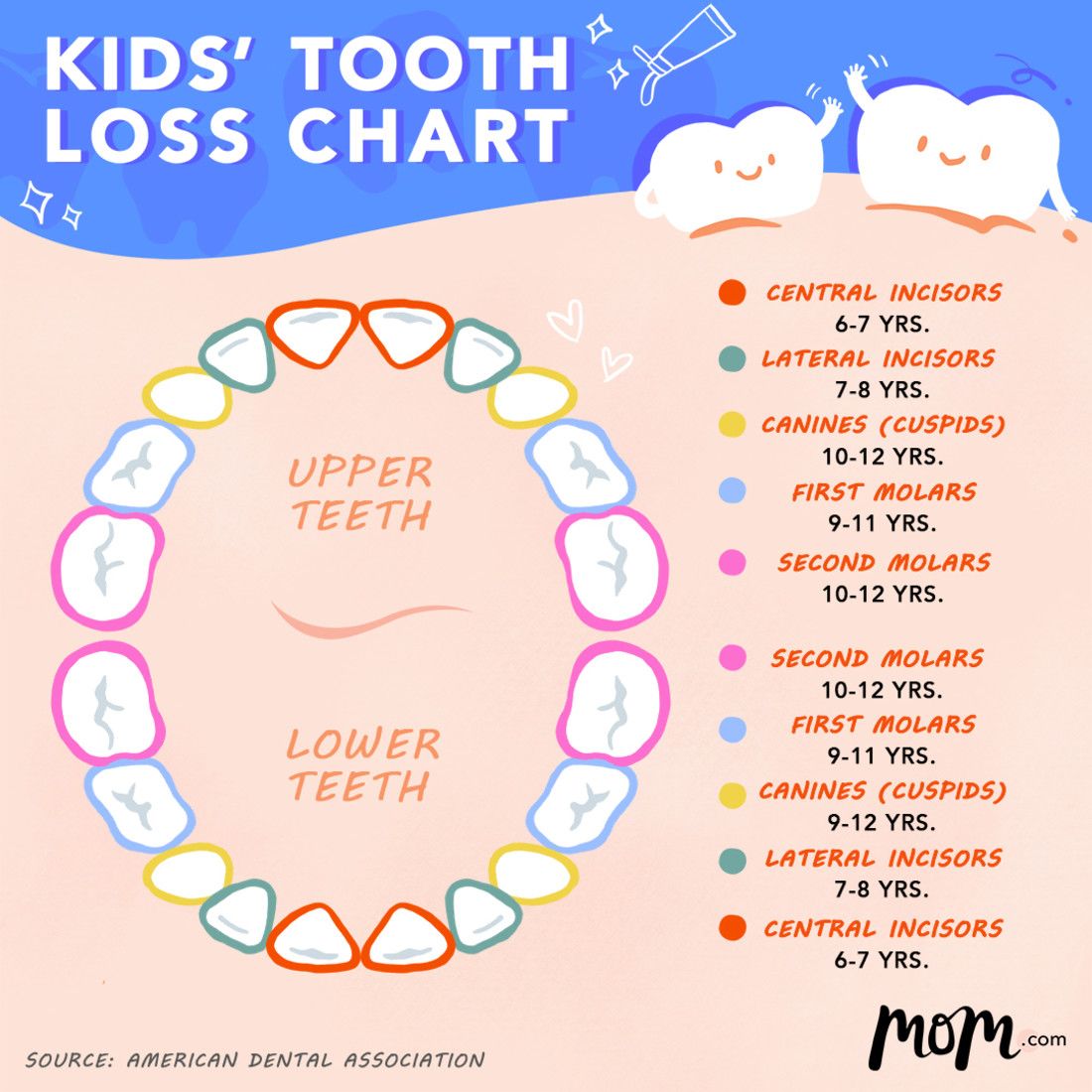 So, if you’re concerned that something else could be at play besides your baby cutting their teeth, contact your pediatrician.
So, if you’re concerned that something else could be at play besides your baby cutting their teeth, contact your pediatrician.
Usually, it’s the first few pairs of teeth that seem to be the most uncomfortable for babies. As more teeth appear, the classic horror tales of teething should subside. But there’s a catch. Sometimes when the final sets of molars come in, the classic painful teething symptoms can return.
Keep in mind that every baby is different, and your child might not experience any symptoms at all when their teeth erupt.
There’s nothing worse than seeing your baby in pain and feeling helpless to stop it. Fortunately, there are plenty of safe remedies that you can use to try to help ease your baby’s discomfort — and restore calm to your home!
One of the best things you can do is give your baby something to chew on. Biting down on hard or firm objects may help them relieve the pressure of their teeth pushing up into their gums.
Always make sure that whatever you give them is large and doesn’t contain small items or pieces that could pose a choking hazard. While you can buy teething toys, you can also create homemade teethers by wetting a washcloth and putting it in the freezer for 30 minutes. It’ll give your little one something to gnaw on, and the cold cloth may also soothe their sore gums.
While you can buy teething toys, you can also create homemade teethers by wetting a washcloth and putting it in the freezer for 30 minutes. It’ll give your little one something to gnaw on, and the cold cloth may also soothe their sore gums.
You can also opt for rubber teething rings, but avoid rings that are full of liquid or gels, as a baby chomping on them could eventually break it. Just remember that even though you can put washcloths in the freezer, teething rings should only be kept in the fridge.
You’ll also want to make sure to have plenty of bibs and soothing skin ointments on hand, as extra drool can lead to skin irritation and rashes.
Over-the-counter remedies
If you’ve tried all the at-home remedies and nothing seems to be working, it’s OK to bring in reinforcements by way of over-the-counter (OTC) remedies.
After talking with your pediatrician, you can use acetaminophen or ibuprofen on an occasional basis to help reduce the pain. This should only be used for babies older than 6 months, and you should ensure that you’re using an appropriate dosage.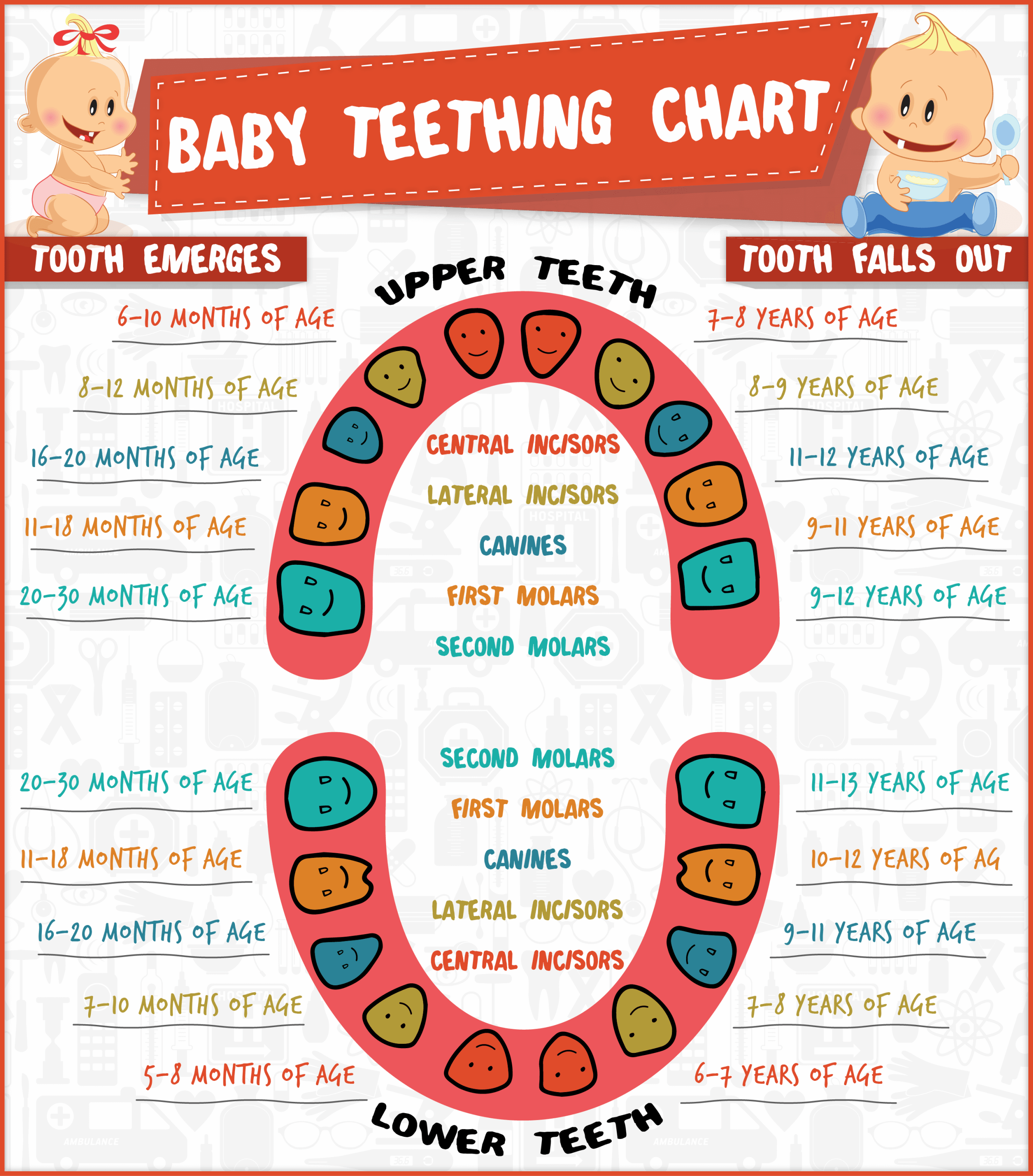
Remedies to avoid
Once upon a time, topical teething gels were a go-to remedy among parents of teething babies. But these days, we know that the benzocaine they often contain can lead to harmful side effects.
Plus, since it’s a topical remedy, the gel washes off the gums fairly quickly, which can lead to parents using it too frequently. Likewise, remedies that are marketed as homeopathic may contain belladonna and should also be avoided for the same reasons.
And while they’re quite popular, most experts don’t advocate for teething bracelets, necklaces, or jewelry. Although they might help soothe your baby’s gums, the small pieces can become choking hazards, and necklaces can be a strangulation hazard. There’s also concern that teething jewelry can harbor bacteria or cause mouth injuries if you have a vigorous biter.
Experts recommend that you make an appointment with a pediatric dentist by a baby’s first birthday or once your child cuts their first teeth. While that first appointment won’t be nearly as intensive as when your child has a full set of teeth, it will help them get comfortable with going to the dentist and set them on the path for good oral health.
While that first appointment won’t be nearly as intensive as when your child has a full set of teeth, it will help them get comfortable with going to the dentist and set them on the path for good oral health.
Teething can be a frustrating time for both babies and parents. But just know that this moment in time is temporary. By the time your child is about 3 years old, they’ll have a full smile to charm you with.
When do baby’s first teeth erupt?
All babies teething according to their own individual program: for some, this process begins earlier, for others later. As practice shows, the first tooth in most children appears at the age of 6 to 8.5 months, and by the year every healthy child has at least one milk tooth in his mouth.
At the age of three or four months, teeth preparing for eruption begin to actively declare themselves: the baby becomes capricious, cries, tries to bite everything that gets into his hands.
The first to appear are usually the two lower, centrally located teeth (lower central incisors or “ones”). Then – the central upper incisors, after which, by about ten months, the upper “twos”, or lateral upper incisors, erupt. By eleven to twelve months, the lateral incisors can also be seen on the lower jaw. Thus, ideally, a one-year-old child is the proud owner of eight milk teeth.
Then – the central upper incisors, after which, by about ten months, the upper “twos”, or lateral upper incisors, erupt. By eleven to twelve months, the lateral incisors can also be seen on the lower jaw. Thus, ideally, a one-year-old child is the proud owner of eight milk teeth.
By about sixteen months, many babies already have first molars on the bottom and top. Fangs (“threes”) appear at the top and bottom later, in the eighteenth – twenty-second month of a child’s life. The second upper and lower molars erupt at the age of 24-33 months. But again, it should be remembered that this process is individual and the order of teething may also be different.
Teeth often grow in pairs: two, and sometimes four at the same time. In girls, for the most part, teeth erupt earlier than in boys. By the age of 2.5-3 years, a complete set of twenty fully erupted teeth can be found in a baby.
Alertness must be shown if a child who is almost a year old does not have a single tooth. In principle, some children may have a congenital feature in the form of late teething, but you should not draw any conclusions on your own, you should definitely consult with a qualified specialist who, if necessary, will prescribe additional examinations.
In principle, some children may have a congenital feature in the form of late teething, but you should not draw any conclusions on your own, you should definitely consult with a qualified specialist who, if necessary, will prescribe additional examinations.
Causes of late teething in children:
- hereditary predisposition, which is a variant of the norm and can be traced in other blood relatives;
- decreased thyroid function;
- rickets;
- diseases of the digestive system;
- violations of enzymatic (fermentation) metabolism;
- pituitary insufficiency;
- lack of calcium in the child’s body;
- genetically determined diseases.
For the baby himself, the process of teething can proceed in different ways. Some children practically do not experience discomfort, others suffer from pain, their sleep is disturbed, their appetite worsens, their temperature rises (up to 38-39 ° C), salivation increases, nasal congestion, wet cough (due to profuse salivation), constipation or, conversely, , increased stool.
Experts recommend starting caring for the child’s oral cavity even before the first teeth erupt: in the morning and evening, before going to bed, the child’s gums should be gently wiped with a swab previously moistened with warm water. After the first teeth appear, you need to clean them with a special fingertip brush, which can also be used to massage the gum tissue. The front teeth should be cleaned with vertical movements, the side teeth with circular movements.
The network of Healthy Smile dental clinics employs experienced pediatric dentists, to whom you can book your baby for a free consultation.
Healthy Smile clinics provide discounts for regular customers, family discounts, various payment methods are possible, and the list of promotional offers to reduce the cost of certain types of services, including for children, is regularly updated.
Desired date and time
Telephone
What is your name?
By clicking on the “Make an appointment” button, you consent to the processing of your personal data.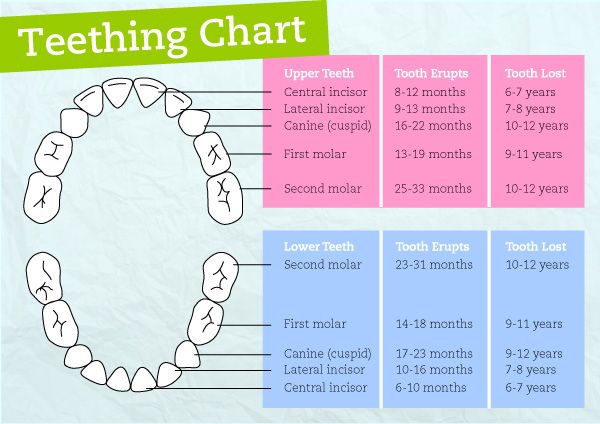
Change of milk teeth to permanent ones: what is important to know?
Many parents still think that pediatric dentistry is needed only in exceptional cases: if the child has a severe toothache and the pain does not go away by itself. There is also an opinion that there is no need to do anything with milk teeth, because they will fall out anyway and give way to molars. These are erroneous opinions that the doctors of our clinic would even call dangerous.
Why does a child need a pediatric dentist? First of all, for preventive examinations and monitoring of the growth of teeth, their change. Many factors influence the health of milk teeth. In turn, the health of the first teeth affects the condition of the molars even before they erupt. Next, we will understand how the change process takes place. Every parent should know this to help their little one get straight, beautiful teeth and not experience problems as an adult.
If you are still not accustomed to taking your child to the pediatric dentist once every six months, it’s time to write down the date of the next visit in the calendar and make an appointment in advance at our clinic. This simple action will help prevent unpleasant problems, positively affect the formation of bite and oral health.
This simple action will help prevent unpleasant problems, positively affect the formation of bite and oral health.
In addition, getting to know the doctor early will help children form a good impression of the clinic. Caring for teeth in Mira children’s dentistry in Krasnoyarsk will be associated with something festive and exciting! This is completely opposite to the situation when you bring a baby to the clinic with a severe toothache that requires treatment. A visit to the dentist will inevitably be remembered as something unpleasant.
The first teeth will cause discomfort in the child during eruption, and this is a natural process. During this period, salivation increases, a runny nose may occur due to the eruption of the upper teeth. The normal pace involves the appearance of new teeth every few weeks.
Be prepared for the fact that the child will be naughty and refuse to eat, he may have a fever. In order to facilitate this period, you can use special teething toys. During this period, the gums become inflamed and cause discomfort – they can itch and hurt. Talk to your dentist: There are safe cooling gels for children that can help reduce the intensity of teething and teething symptoms in children.
During this period, the gums become inflamed and cause discomfort – they can itch and hurt. Talk to your dentist: There are safe cooling gels for children that can help reduce the intensity of teething and teething symptoms in children.
It is also recommended to replace drinks with plain water. Juices and other drinks that contain sugar create an acidic environment in the mouth. Because of this, an inflammatory process can begin. Care should be taken to disinfect pacifiers and toys that children may place in their mouths.
The first teeth appear at the age of six months. The first chewing teeth appear at the age of 1 to 1.5 years. Fangs are cut in a period of up to 2 years. After that, by the age of 3, the following chewing teeth appear. Each new group requires attention. So, it is important to clean chewing teeth well after eating, since the enamel of milk teeth is quite weak. Food retention on the surface can easily cause inflammation.
It is also important to make sure that the child weaned from the pacifier and stopped putting his fingers in his mouth.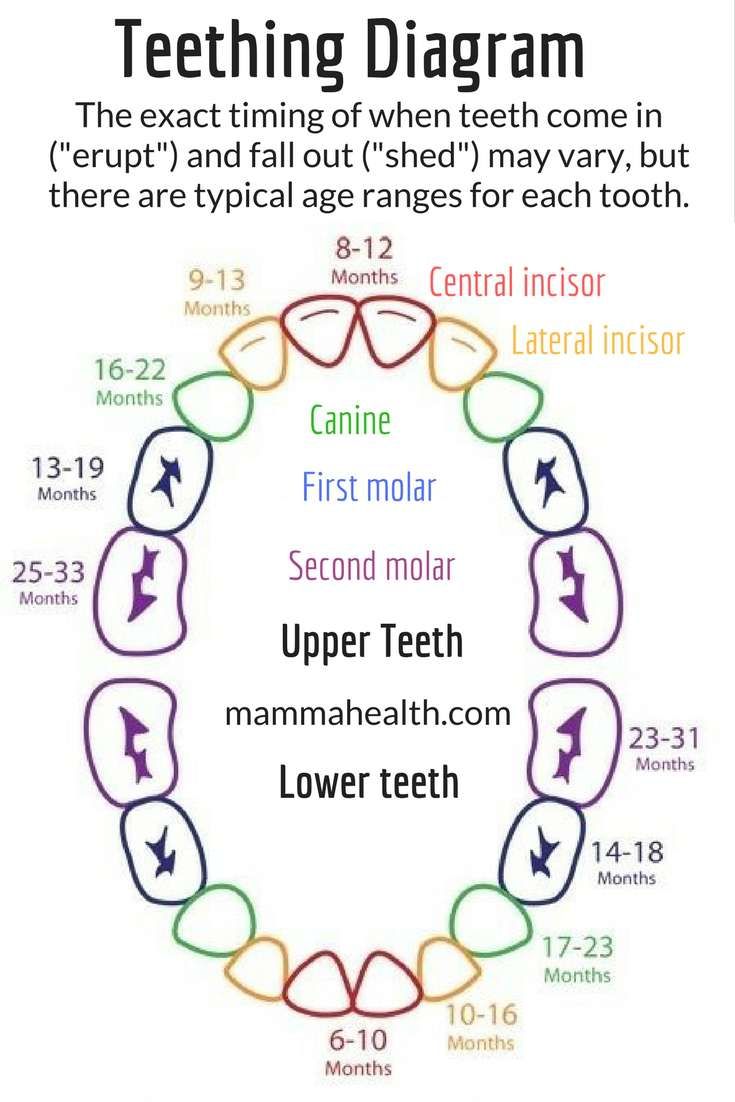 If this does not happen, an incorrect bite will be formed.
If this does not happen, an incorrect bite will be formed.
At the age of about 5 years, milk teeth begin to fall out, giving way to molars. It is important not to stimulate this process. It is not necessary to remove teeth, as this will negatively affect the growth of molars. In exceptional cases, the doctor may prescribe surgery if there is severe caries, too early or late eruption.
If a tooth is loose and about to fall out, no help is needed. It is better to take the baby to the doctor to get an individual recommendation and confidence that the processes are going naturally.
Do not forget to take your child to the doctor about once every 3 months in order to carry out mineralization, fluoridation and treatment of caries in time. If the pain during teething is very strong, it is allowed to give painkillers to children.
After the age of 3, parents can take a break from the changes. And then, at about 5 years of age, milk teeth are replaced by permanent ones.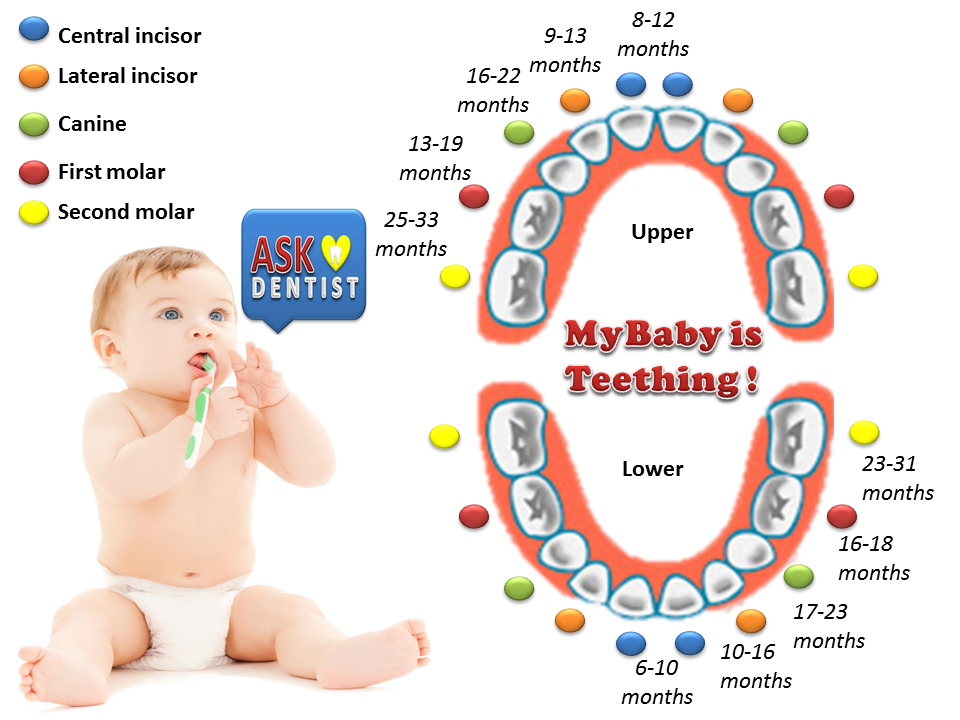 The process begins with the lower incisors. Then, after about a year, chewing “sixes” are cut, which parents may mistakenly take for dairy. A year later, the upper incisors change.
The process begins with the lower incisors. Then, after about a year, chewing “sixes” are cut, which parents may mistakenly take for dairy. A year later, the upper incisors change.
To make this journey with your child without problems and pain, visit the dentist regularly. Children may experience pain simply from jaw expansion. The doctor can easily tell you the cause of the discomfort. The age of 6-7 years shows the prospect of bite formation. Here you can quickly fix the problems that arise so that by adolescence the child has an even beautiful smile.
Further, the procedure for replacing milk teeth continues with the upper lateral incisors by 8 years. aged 9-10 years old, the primary first premolars appear, and a year later they are followed by the second premolars. 12-13 years old is the age of the appearance of fangs, and at 14 years old the last second molars are cut.
The procedure for replacing milk teeth ends with the full formation of a bite in the amount of 24 teeth.
It is recommended to bring your baby to the dentist as soon as the first tooth begins to cut. In some cases, if there are problems, this should be done earlier. You already know that adults are advised to visit the dentist once every six months to prevent and treat problems in the early stages.
Speaking about children, they need preventive meetings with the doctor more often. The growth, condition and change of teeth in children must be carefully monitored. Milk teeth are less resistant to caries, therefore, to detect inflammatory processes in the early stages, you need to go to the dentist more often.
Of course, any unpleasant symptom in the oral cavity requires a visit to a doctor. But, even if everything is fine, visiting the clinic is highly recommended. A child cannot always tell his parents about any symptoms, and the stage of the white spot, from which caries begins, is very difficult to notice with an inexperienced eye.
What do we do as part of prevention? Milk teeth can be strengthened, saturate with minerals.